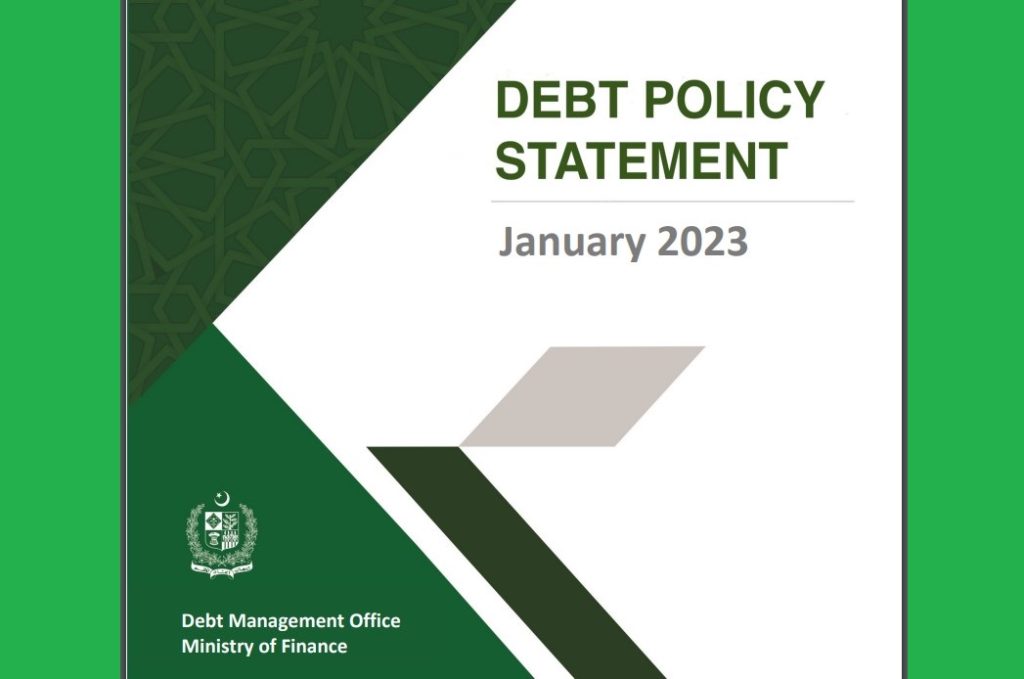Huge Debt Eats Up Fiscal Space of Pakistan
In Pakistan, amid FY 2021-22 & up to 1st quarter FY 2022-23, taking after improvements were seen with regard to obligation administration, a few of them are highlighted underneath:
§ Effective completion of the 7th and 8th survey of the IMF Amplified Finance Office (EFF) driven to the aggregate dispensing of USD 3.9 billion with adjust of USD 2.6 billion. Current EFF has been expanded upto June 2023 with expanded estimate of credit from USD 6 billion to USD 7 Billion;
§ Government raised around PKR 1.7 trillion through issuance of residential Sukuk amid FY 2021-22 & 1st quarter FY 2023.
This has not as it were made a difference in raising the Shariah-compliant financing at a sensible fetched but has too expanded the share of these rebellious in government household securities portfolio i.e., share of Shariah compliant obligation was 8.9 percent in government securities at the conclusion of 1st quarter FY 2023 in this way surpassing the target of 7.5 percent set beneath Medium Term Obligation Administration Procedure;
§ Inside household obligation, the government depended basically on medium-term household obligation securities for the financing of its financial shortfall, in-line with its commitment to decrease the T-bills/GDP Proportion and eventually the GFN/GDP proportion;
§ Inside outside obligation, inflows from multilateral and respective advancement accomplices remained major sources of financing. Obligation from multilateral and reciprocal sources in total constituted around 79 percent of the outside obligation portfolio at end-September 2022;
§ Government gotten US$ 3,000 million store from Saudi Arabia which was utilized towards budgetary support;
§ Government effectively raised USD 1 billion in July 2021 through multitranche tap issuance of 5-, 10- and 30-year Eurobonds. In expansion, the Government of Pakistan effectively raised USD 1 billion in January 2022 through the issuance of Universal Sukuk beneath the ‘Trust Certificate Issuance Program’.
This was the primary time that government issued Worldwide Sukuk with 7 Year development; and Government utilized IMF distributed SDR identical to PKR 475 billion to bolster its budgetary operations.
Most economies world-wide depend on obligation inflows to fulfill the setback in accessible assets to support the government budget. Moreover, asset seriously framework ventures too stay indivisibly unexpected on accessibility of assets.
Given the restricted budgetary assets with creating nations like Pakistan, borrowing gets to be a need to realize advancement and social welfare goals. Subsequently, Pakistan must keep up a sensitive adjust between the borrowing should back its advancement prepare whereas guaranteeing that level of obligation is overseen in line with country’s reimbursement capacity.
Therefore, debt administration methodology must accommodate national advancement objectives whereas on the other it should guarantee that ideal financing alternatives are chosen in see of taken a toll and hazard tradeoffs. 1.2 Amid FY 2021-22, in spite of challenging macroeconomic environment, Pakistan’s Obligation to GDP proportion seen a minimal increment of 2 rate focuses and stood at 73.5 percent at end-Jun 22 compared with 71.5 percent a year prior.
This was basically due to unfavorable trade rate development on account of deterioration of Pak Rupee against remote monetary standards which stood around 5 percent of GDP.
This proportionstill remained underneath the pre-pandemic level of 74.7 percent for Pakistan, opposite to worldwide Obligation to GDP levels remaining over the pre-pandemic level1. Be that as it may, it was higher than the limit of 58 percent to be accomplished by FY 2021-22 as stipulated in Financial Obligation and Obligation Confinement (FRDL) Act. Government is committed to diminish this proportion on the back of running essential surpluses and advance measures that back higher long-term financial development.
With lower monetary shortage, open obligation is anticipated to enter a descending way towards imagined levels. 1.3 Sound hone for open obligation administration requires that obligation obligations ought to not be divided because it leads to deficiently coordination among different teach included, problematic borrowing choices, duplication of competencies, and a detach with procedure execution.
In Pakistan, there has been a developing realization that viability of obligation administration work can be improved by uniting obligation administration capacities into single, professionally overseen and enough resourced Obligation Administration Office. Appropriately, in June 2022, alterations in Financial Obligation and Obligation Impediment Act were made.


























